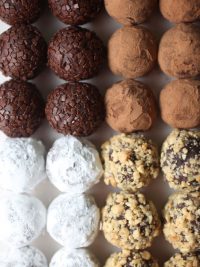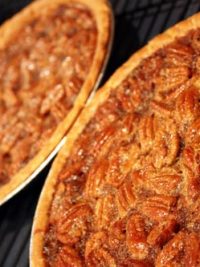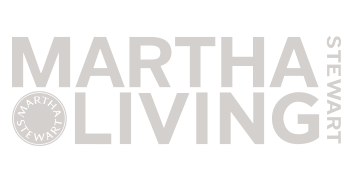Miette’s Tomboy Cake
makes one 6-inch layer cake
This cake was on its way to becoming a conventionally frosted layer cake when I noticed how unexpectedly voluptuous the bare sides looked with the frosting poking out between the layers. This cake has a gamine quality, a little rough around the edges—a bit of a tomboy with a little rose on top. The expression “tomboy” has become part of the Miette vocabulary for a particular decorating style; any cake and frosting combination can become a Tomboy. The Double Chocolate Cake is the perfect candidate because its layers are so moist that they do not dry out even when exposed to the air. You’ll notice a lot of attention to crumb control in this recipe; to achieve the finished look and keep the buttercream pristine, you need to guard against every fleck. I especially like the Tomboy’s proportion of frosting to cake; just a bit of each per bite, and never too much frosting. Key to the look of this cake is the star tip, used to pipe the frosting borders that give the frosting its slightly frilly edge.
ingredients
1 DOUBLE CHOCOLATE CAKE (please see separate recipe here)
ABOUT 3 CUPS RASPBERRY BUTTERCREAM (please see separate recipe here) OR FLAVOR OF YOUR CHOICE
1 ICING ROSE AND SMALL GREEN LEAF (OPTIONAL)
preparation
1. Make the Double Chocolate Cake as directed, using a regular cake pan, and make sure it is cool inside and out. (If frozen, let thaw in the refrigerator, 3 to 4 hours. If time demands, you can thaw on the countertop, 1 to 2 hours, but be careful not to let it sit too long before you begin working with it. This cake needs to be scrupulously crumb free, so make sure it is still cold when you begin to work.)
2. Clear a space in the refrigerator large enough for the cake on a cake board. If you made the buttercream previously and it has been refrigerated, see note below for instructions to reheat and remix the frosting.
3. Set a revolving cake stand on a clean, dry work surface and place the cake, top-side up, on the stand. Using a serrated knife and holding the blade perfectly horizontal, cut the cake into three equal layers. While you saw gently with the knife, use your other hand to rotate the stand gradually and bring the cake toward you. Get eye level to the cake as needed to make sure you are holding the knife exactly level. (You do not need to level the top of the cake.)
4. Arrange all three cake layers on the work surface. Using your hands, tap off and brush away excess crumbs. Turn the original bottom layer flat-dark-side, or pan-side, down; reserve this to be the bottom layer of the assembled cake. (This is the reverse of the usual method of using the flat side for the top of a finished cake, but here the smooth edges from the cake pan give a nice finished look to the unfrosted base of the Tomboy.) Tap any crumbs off the cake stand as well, and brush the work surface clean.
5. Place a nonslip pad or damp paper towel on the cake stand to prevent slipping and center a cake board on top. Take up the reserved bottom of the cake and center it on the board, first double-checking it for crumbs and brushing any off or pressing them into the sides.
6. Fit a pastry bag with a medium (½- or 5/8-inch) star tip and fill about halfway with the buttercream. Pull up the cuff and twist it to seal and tighten the frosting down into the cone. Purge the bag of air bubbles by squeezing the bag until there is a burst of air and frosting sputters out of the bag. Keep the bag tightly twisted so that the frosting doesn’t come back up on your hands. Holding the bag at a 90-degree angle, pipe a ring of frosting around the outer edge of the cake, keeping a 1/8inch border at the very edge. Starting at the inner edge of the border, spiral inward filling in the center of the ring to make an even layer of buttercream. Holding an offset spatula flat on the inside ring of frosting, with the spatula centered on the cake, smooth the inside of the ring, leaving the piped edges untouched.
7. Double-check a second cake layer for crumbs, then place it on top of the buttercream layer. Using your fingertips, gently center the cake on top. Be sure not to press too hard so that the buttercream spreads over the edge. Repeat with a layer of buttercream just like you did on top of the first cake layer.
8. Double-check the third and final cake layer for crumbs, then place it on top. Using your fingertips and gentle pressure, press down in the center and out to the edges to coax the frosting to align with the cake edge, but not beyond, on all sides.
9. For the top layer, pipe a ring of buttercream around the edge, leaving a 1/8-inch margin. Fill in the center with slightly more frosting than the inner layers. Using a small offset spatula, smooth the center first by rotating the cake stand, then gradually work out to the edges, pushing the frosting out very slightly as you go.
10. If desired, in the center of the cake, scoop out a little hole in the frosting to make a setting for the rose. Nestle the rose in the hole and arrange the leaf next to it at a 45-degree angle. Very carefully transfer the cake on the board to a presentation platter.
11. This cake needs to be served at room temperature. Serve at once, or hold at room temperature for up to 4 hours. For longer storage, refrigerate for up to 3 days and remove from the refrigerator 4 hours before serving.
NOTE: reheating and remixing the frosting
When the assembled cake is set and ready for the final coat, remix the frosting, warming slightly if necessary: Place the remaining frosting in a microwave-safe bowl and microwave on high for 15-second intervals, stirring in between each, until the frosting is soft and spreadable. Depending on how long ago the frosting was made and the temperature of the room, this can take from 15 to 30 seconds. If the frosting was frozen it may take up to 2 minutes. (If you overheat the frosting and it melts into liquid, don’t panic—just put it back in the refrigerator until it firms up again, about 20 minutes.) If you don’t have a microwave, you can also reheat your frosting in a bain-marie or double boiler. With this method, you need to transfer the frosting to a heatproof bowl if it’s not already in one. Place the bowl over gently simmering water. Stir often, pulling the frosting in from the sides of the bowl as it melts, until soft and smooth throughout, 1 to 2 minutes.
Transfer the warmed frosting to a clean bowl of a stand mixer and fit the mixer with the paddle attachment. Beat at low speed until the frosting is smooth and very shiny, 1 to 2 minutes. Do not use a whisk and do not beat at too high a speed or for too long—any of these will add too much air and produce bubbles that will make the presentation layer look porous and pockmarked.
Recipe courtesy of Chronicle Books











